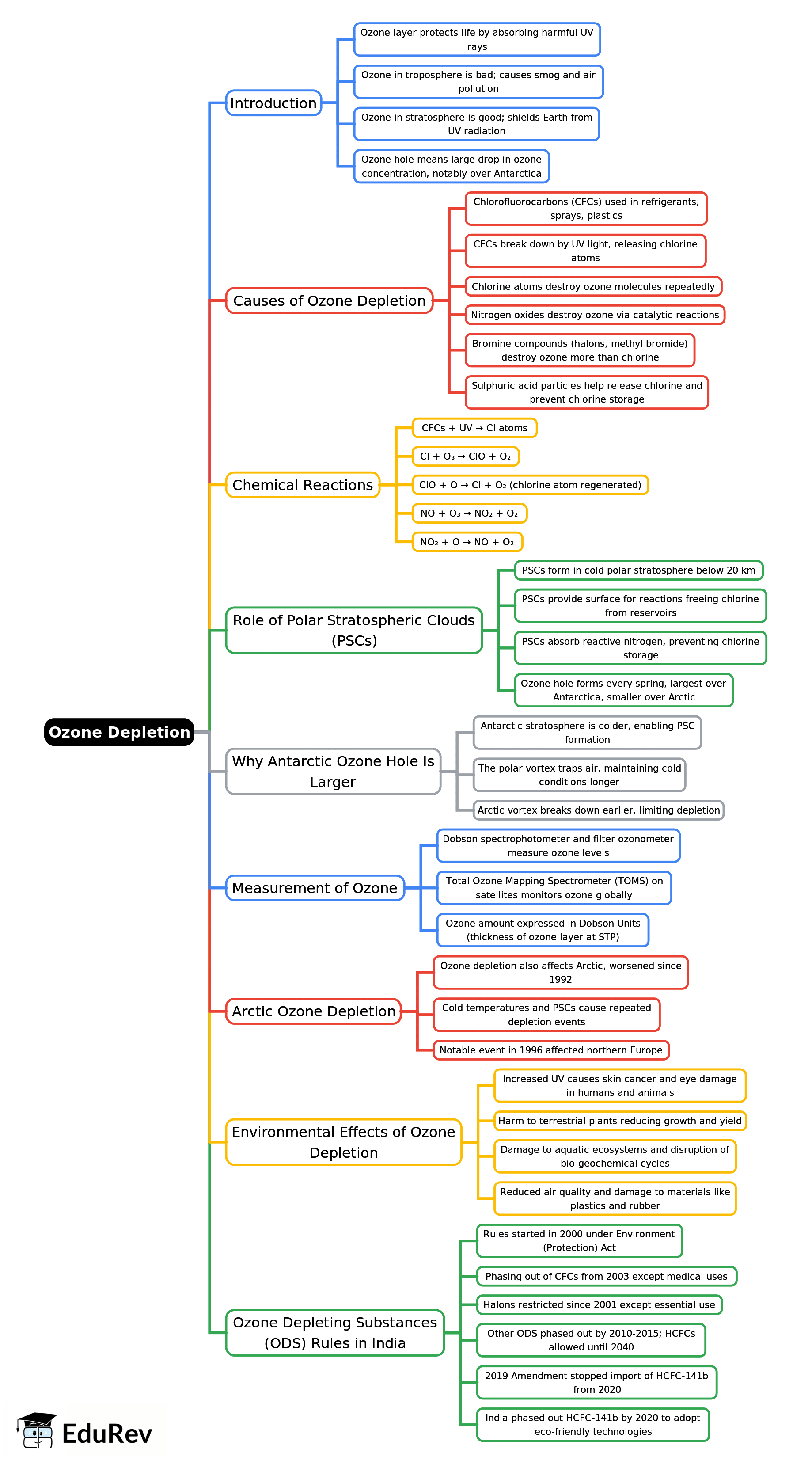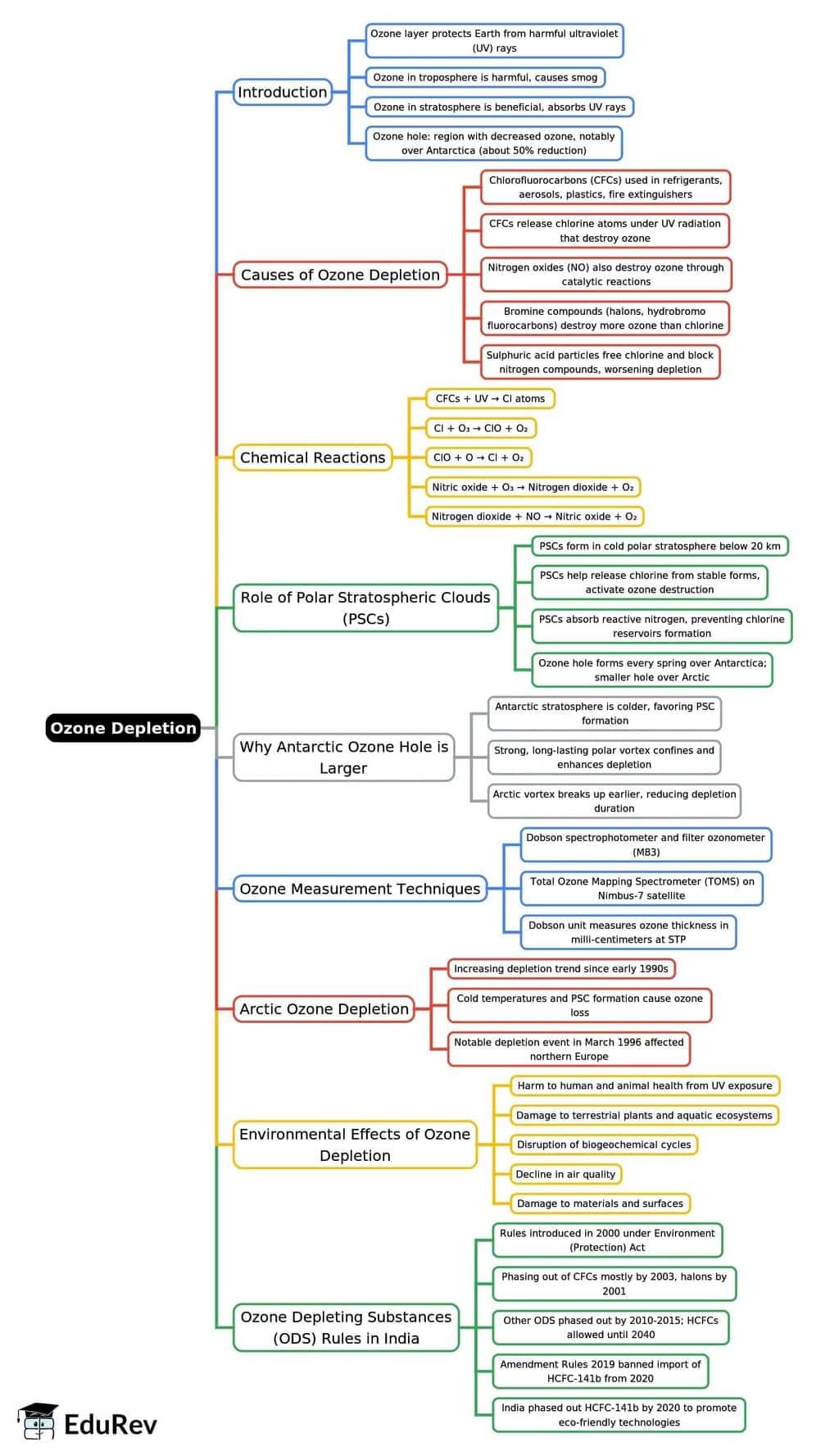UPSC Exam > UPSC Notes > Environment for UPSC CSE > Mind Map: Ozone Depletion
Mind Map: Ozone Depletion | Environment for UPSC CSE PDF Download
Ozone Depletion - 1

Ozone Depletion - 2

The document Mind Map: Ozone Depletion | Environment for UPSC CSE is a part of the UPSC Course Environment for UPSC CSE.
All you need of UPSC at this link: UPSC
|
95 videos|230 docs|52 tests
|
FAQs on Mind Map: Ozone Depletion - Environment for UPSC CSE
| 1. What is ozone depletion and what causes it? |  |
Ans.Ozone depletion refers to the thinning of the ozone layer, which is a region of Earth's stratosphere that contains a high concentration of ozone (O₃) molecules. The primary cause of ozone depletion is the release of chlorofluorocarbons (CFCs) and other ozone-depleting substances into the atmosphere. These chemicals break down ozone molecules, leading to a decrease in the ozone layer's thickness, which is crucial for protecting living organisms from harmful ultraviolet (UV) radiation.
| 2. What are the environmental impacts of ozone depletion? |  |
Ans.Ozone depletion has significant environmental impacts, particularly on human health and ecosystems. Increased UV radiation due to a thinner ozone layer can lead to higher rates of skin cancer, cataracts, and weakened immune systems in humans. Additionally, it can adversely affect marine life, especially phytoplankton, which are the foundation of the oceanic food web. Terrestrial plants may also suffer from reduced growth and photosynthesis efficiency due to increased UV exposure.
| 3. What international agreements have been made to address ozone depletion? |  |
Ans.International agreements aimed at addressing ozone depletion include the Montreal Protocol, established in 1987. This treaty successfully led to the phasing out of the production and consumption of many ozone-depleting substances, including CFCs. The protocol has been instrumental in the recovery of the ozone layer, with signatory countries committing to reducing the use of harmful chemicals and promoting alternatives that do not impact ozone levels.
| 4. How does ozone depletion affect climate change? |  |
Ans.Ozone depletion and climate change are interconnected issues. While ozone depletion primarily affects UV radiation levels, it can also influence climate patterns. The reduction in ozone concentrations in the stratosphere can lead to changes in temperature and circulation patterns, which may affect weather systems. Furthermore, some ozone-depleting substances are potent greenhouse gases, contributing to global warming. Addressing ozone depletion can thus have positive effects on climate change mitigation efforts.
| 5. What measures can individuals take to help reduce ozone depletion? |  |
Ans.Individuals can take several measures to help reduce ozone depletion, such as avoiding products that contain CFCs and other ozone-depleting substances, including certain aerosols and refrigerants. Opting for eco-friendly alternatives and ensuring proper disposal of old appliances that may contain CFCs are also important. Additionally, raising awareness about the importance of protecting the ozone layer and supporting policies and initiatives aimed at reducing ozone-depleting emissions can contribute to global efforts in this area.
Related Searches
















